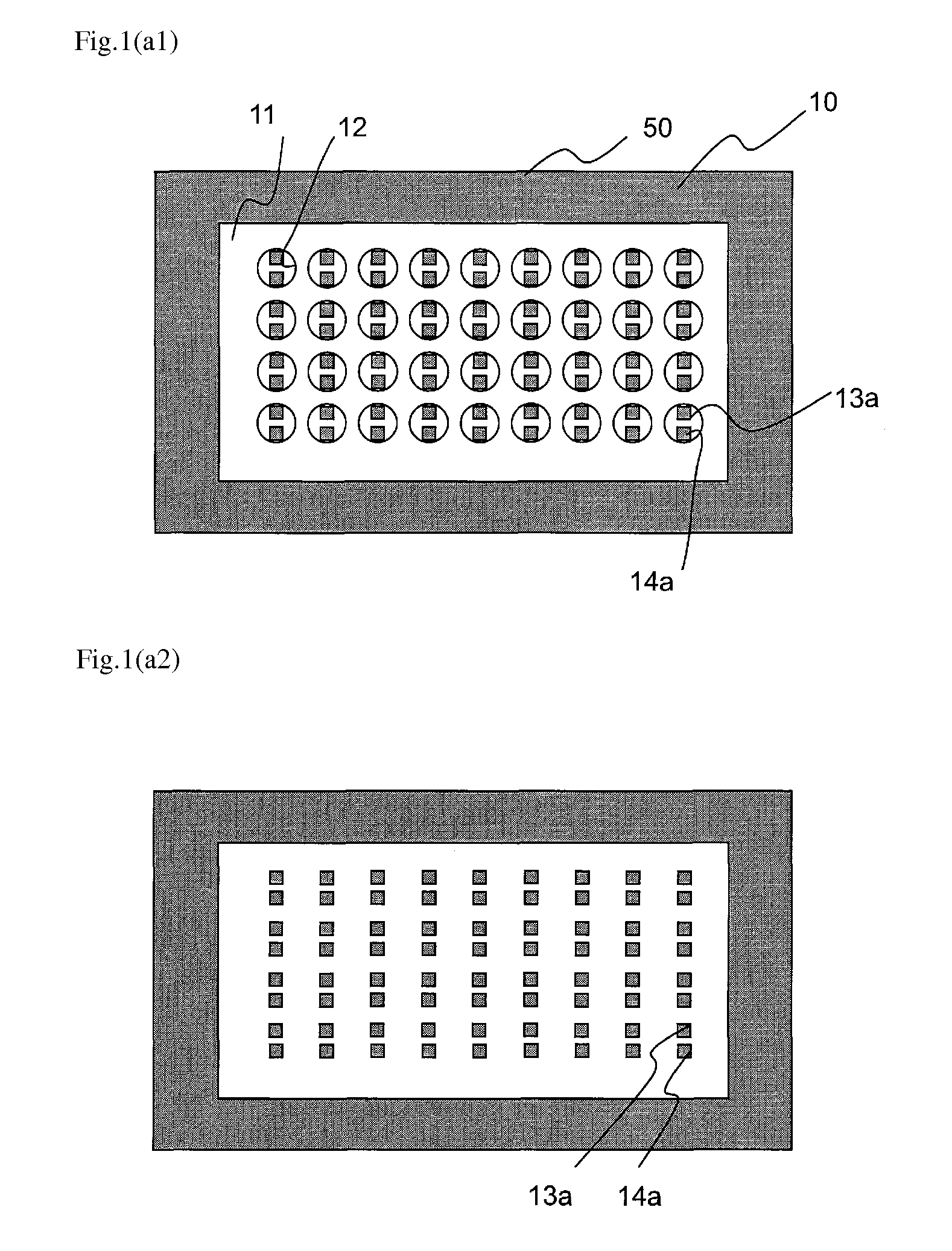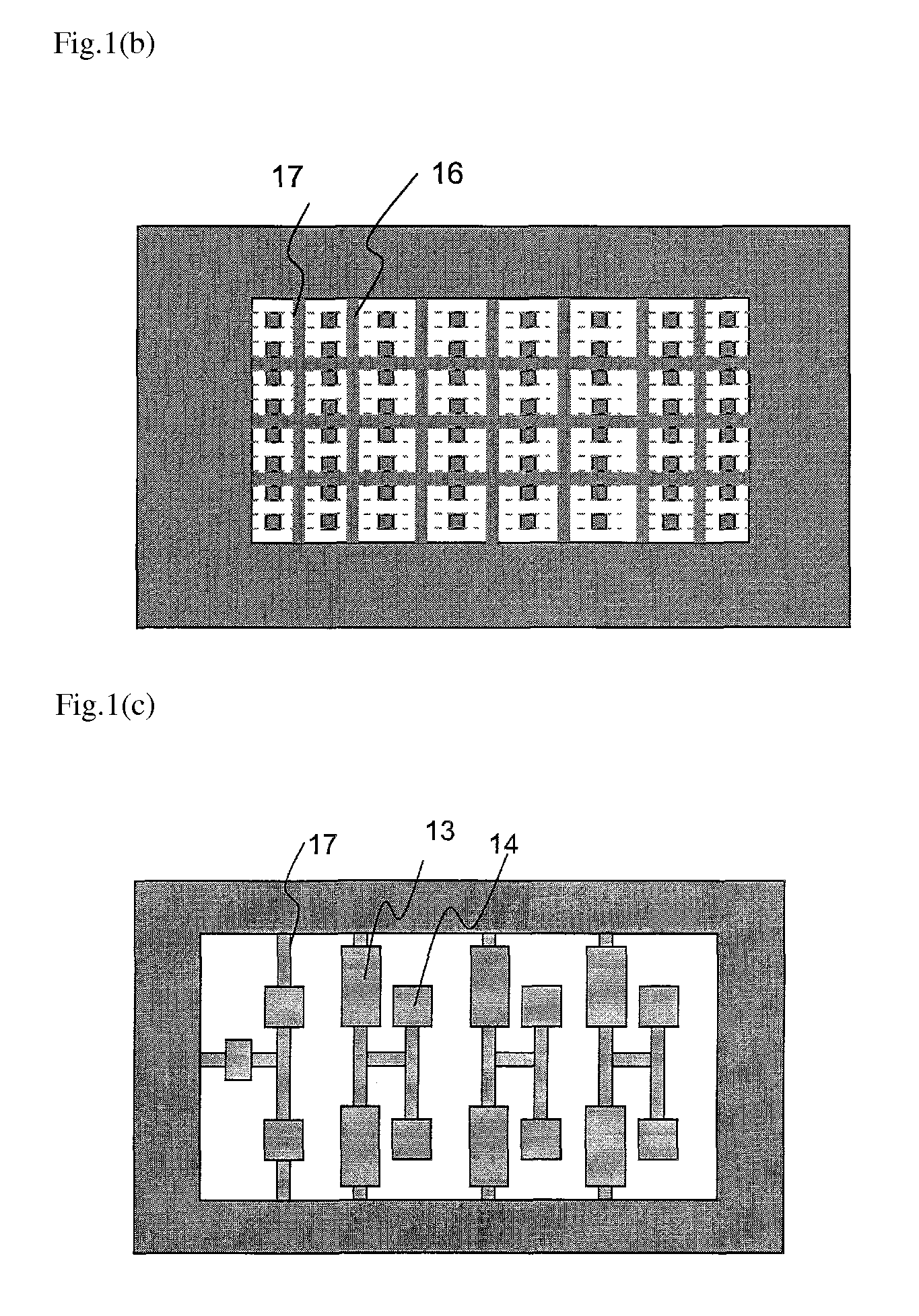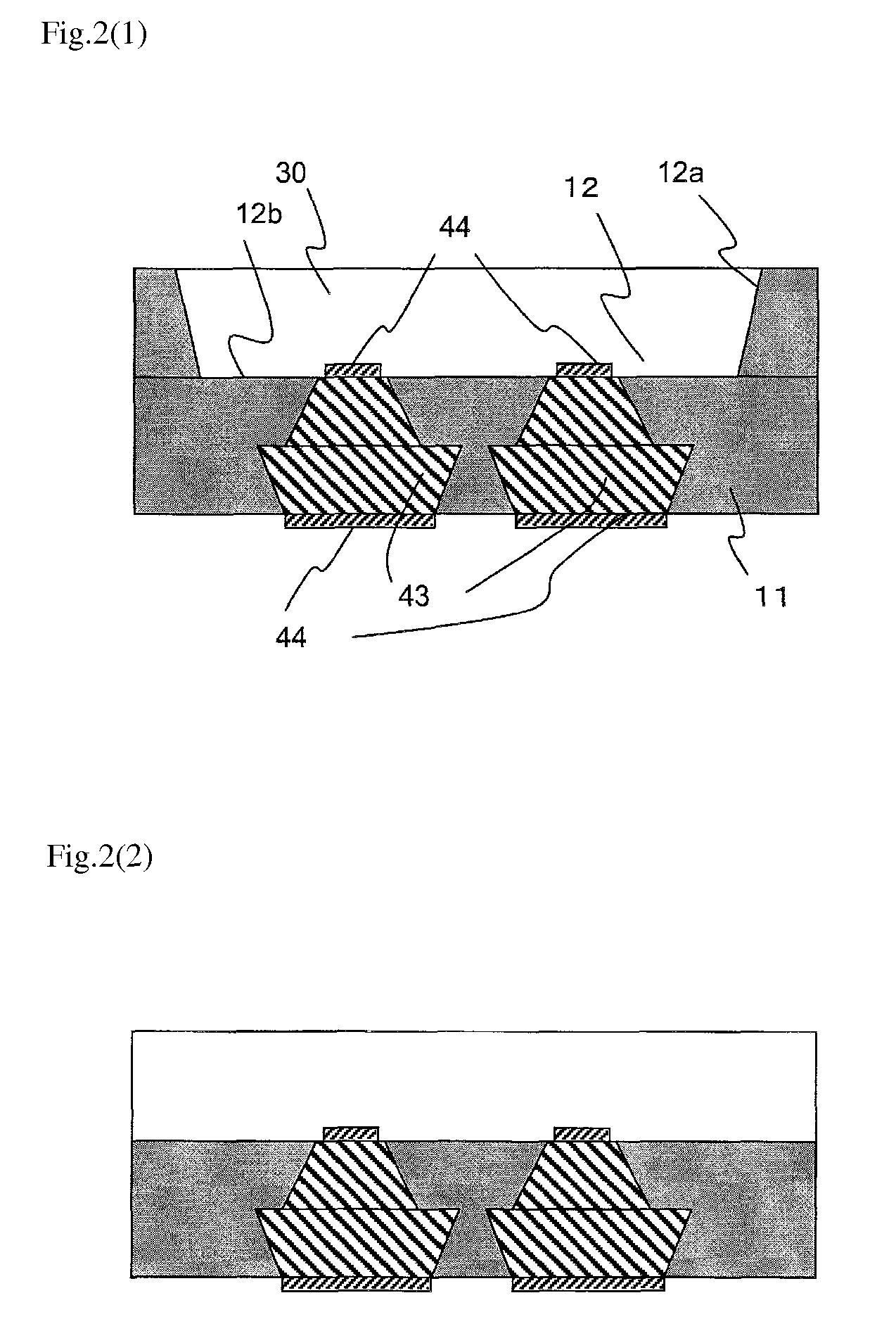Silicon-containing curable composition, cured product of the silicon-containing curable composition and lead frame substrate formed of the silicon-containing curable composition
a technology of curable composition and composition, which is applied in the direction of solid-state devices, plastic/resin/waxes insulators, and semiconductor/solid-state device details, etc., can solve the problems of limited use of curable compositions, individual features that cannot be satisfied, and techniques suggested in these literatures, etc., to achieve excellent curability, light resistance property, cracking resistance property and mechanical strength
- Summary
- Abstract
- Description
- Claims
- Application Information
AI Technical Summary
Benefits of technology
Problems solved by technology
Method used
Image
Examples
synthetic example 1
Synthesis of Component (A): Silicon-Containing Polymer A-1
[0170]1.0 mol of phenyltrimethoxysilane, 0.5 mol of vinyltrimethoxysilane, 0.5 mol of methyltrimethoxysilane, 0.25 mol of dimethyldimethoxysilane and 650 g of toluene were put into a 2,000 ml four-necked flask equipped with a cooling tube and a stirring apparatus, 31.4 g of a 0.5% aqueous sodium hydroxide solution was added dropwise over 30 minutes under stirring, and a dehydration polymerization reaction was conducted at 60 to 65° C. for 3 hours. The reactant was cooled to a room temperature, the oil layer was extracted by adding 600 g of toluene and 1,500 g of ion-exchanged water and washed with water until neutral, and the solvent was removed to give 232.6 g of silicon-containing polymer A-1 having a weight average molecular weight of 15,000 (white powder).
synthetic example 2
Synthesis of Component (A): Silicon-Containing Polymer A-2
[0171]0.25 mol of phenyltrimethoxysilane, 1.0 mol of vinyltrimethoxysilane, 0.9 mol of methyltrimethoxysilane, 0.4 mol of dimethyldimethoxysilane and 650 g of toluene were put into a 2,000 ml four-necked flask equipped with a cooling tube and a stirring apparatus, 31.4 g of a 0.5% aqueous sodium hydroxide solution was added dropwise over 30 minutes under stirring, and a dehydration polymerization reaction was conducted at 60 to 65° C. for 3 hours. The reactant was cooled to a room temperature, the oil layer was extracted by adding 600 g of toluene and 1,500 g of ion-exchanged water and washed with water until neutral, and the solvent was removed to give 198.5 g of silicon-containing polymer A-2 having a weight average molecular weight of 50,000 (white powder).
synthetic example 3
Synthesis of Component (A): Silicon-Containing Polymer A-3
[0172]0.12 mol of phenyltriethoxysilane, 0.03 mol of vinyltriethoxysilane, 0.09 mol of methyltriethoxysilane, 0.03 mol of dimethyldimethoxysilane and 70 g of toluene were put into a 300 mL four-necked recovery flask, 8 g of a 0.2% aqueous oxalic acid solution was added thereto under stirring, and stirring was conducted at a room temperature for 1 hour. 10 g of a 0.2% aqueous sodium hydroxide solution was added, and a reaction was conducted by stirring at 80° C. for 3 hours. The obtained reaction liquid was washed with water until neutral, and the solvent was removed to give 26 g of silicon-containing polymer A-3 having a weight average molecular weight of 8,000 (white powder).
PUM
 Login to View More
Login to View More Abstract
Description
Claims
Application Information
 Login to View More
Login to View More - R&D
- Intellectual Property
- Life Sciences
- Materials
- Tech Scout
- Unparalleled Data Quality
- Higher Quality Content
- 60% Fewer Hallucinations
Browse by: Latest US Patents, China's latest patents, Technical Efficacy Thesaurus, Application Domain, Technology Topic, Popular Technical Reports.
© 2025 PatSnap. All rights reserved.Legal|Privacy policy|Modern Slavery Act Transparency Statement|Sitemap|About US| Contact US: help@patsnap.com



